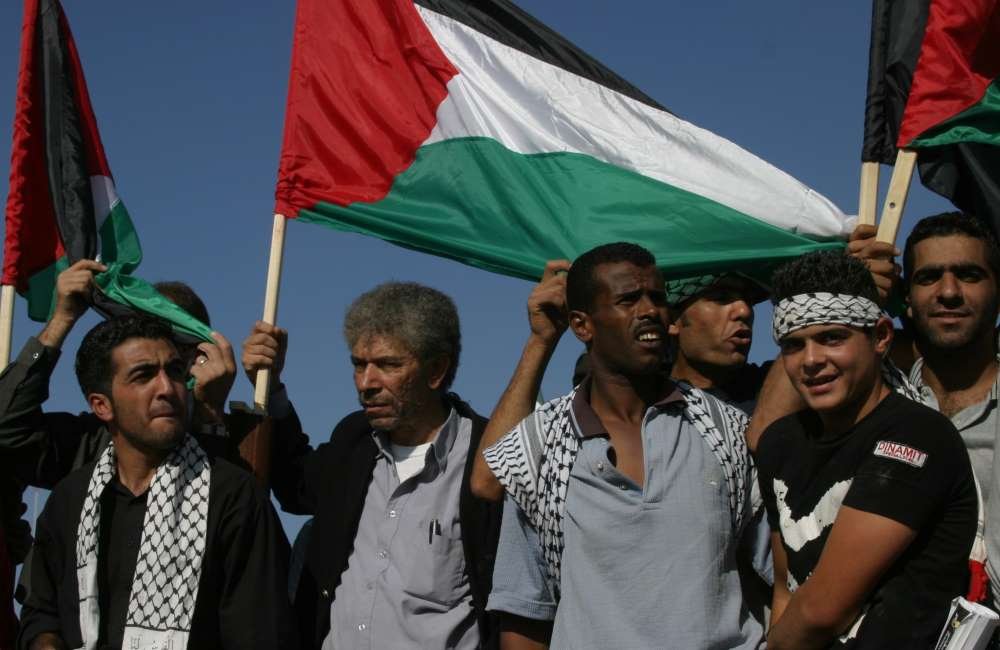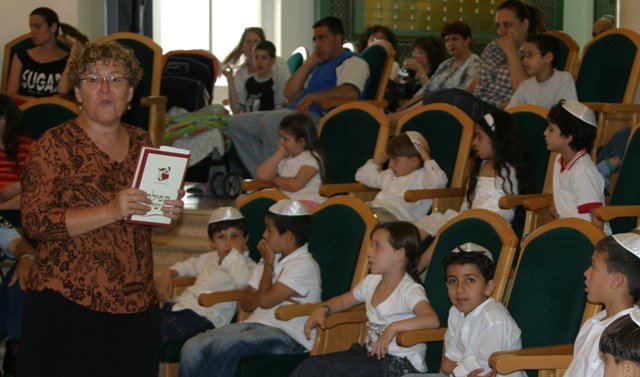Share This Story, Choose Your Platform!
The popular Israeli poet, singer and songwriter Naomi Shemer is currently being commemorated in Israel. She died 20 years ago, but her work lives on, not only in her home country, but also worldwide. In February of this year, for example, the Iranian singer Dara, who lives in America, surprised a wide audience with his interpretation of her song “Churshat haEukalyptus” (The Eucalyptus Grove).
She was born Naomi Sapir on July 13, 1930. She grew up in Kibbutz Kinneret on the shores of the Sea of Galilee – whose eucalyptus groves she sings about with great feeling. Her family history is the history of the Jewish pioneers. They have been planting today’s huge eucalyptus trees since 1912 and survived the battles in the War of Independence in Kibbutz Deganja: “When mom came here, so pretty and young, dad built her the house on the hill, … Half a century has passed since then, but the eucalyptus grove, the bridge and the boat are still there … The cannons roared on the other bank. Calm has returned at the end of summer …”
Naomi Sapir went to school from Kibbutz Kinneret across the Jordan Bridge to Kibbutz Deganya. At the age of six, she started playing the piano that her mother had received as a gift and which was available to all the children in the kibbutz. Back then, such an instrument was something very special. She later studied at music schools in Tel Aviv and Jerusalem before returning to the kibbutz as a music and rhythm teacher. She wrote her first songs for children. In the army, she served in the cultural department of the “Nachal” unit. Naomi then married the actor Gideon Shemer and moved to Tel Aviv with him.
For a time, she worked closely with the Nachal music band and other military bands. This environment was the fertile ground from which some famous Israeli singers and musicians came. Quite a few of the good old Israeli hits were written there. The sound of modern Israeli pop music makes some people long for those times. An old film strip captured Naomi Shemer leading and frightening the pretty Yardena Arazi, who was still new and inexperienced in the military at the time, during a rehearsal.
The song “Hoppa hey”, originally written for the central commando unit, won first prize at an international festival in Italy in 1960. However, her song “Jerusalem of Gold”, whose title comes from old Jewish legends, is probably the best known. “Yerushalayim shel zahav“ was heard for the first time at the 1967 Israeli song festival (”Festival haZemer veHaPizmon”) in Jerusalem, but not as one of the songs competing there. “Yerushalayim shel zahav” – along with four other songs – had been commissioned by Jerusalem’s mayor Teddy Kollek and was intended to bridge the judges’ consultation period.
When Naomi Shemer had already decided on this motif, she was overcome with doubt: “One needs to remember how gray and lacking in gold Jerusalem was then, and how one could not speak highly of it or have parades there. Like the saying ‘Do not wake or rouse’ [Song of Songs 2:7], I was awestruck and asked myself: Of gold? Are you sure about the gold? And something answered me: Absolutely, of gold.”[1]
The festival was part of the independence celebrations. Three weeks later, during the Six-Day War, the Old City with the Temple Mount and the Western Wall fell back into Jewish hands. Under this impression, the poet added another verse to her song: “We returned to the water sources and the market, The shofar calls again on the Temple Mount in the Old City … And to the Dead Sea we go through Jericho again.”
Later she was accused of having copied the melody. Initially, she vehemently defended herself against this accusation. It was only towards the end of her life that she wrote to her friend Gil Aldama that she had once been sung a Basque folk song. She had forgotten that. But somehow the melody had subconsciously got stuck in her head. She later remembered this. Obviously, this accusation has caused Naomi Shemer a lot of thought – although it is rather natural and happens again and again that musicians are influenced and inspired by other melodies.
The Festival of Hebrew Songs, which at the time was all about originality, was first held in 1960 at the Tel Aviv Cultural Center and broadcast on Kol Israel radio and later on television. This festival existed for twenty years before it was discontinued due to Eurovision, on which Israeli singers were increasingly focusing. The originality of Hebrew songs remained for some time and was rewarded with prizes in Eurovision.
The Ein Gev festival has a much longer tradition. Kibbutz members had no opportunity to travel to the city or invite artists. Therefore, in April 1943, they began to organize a festival on site with their own funds, at which classical music and Israeli songs were performed. Naomi Schemer presented her song “Hakol patuah” at this festival in 1993: “Anything is possible as long as we sing here like this”. In 2002, the entire Ein Gev Festival was dedicated to her songs. The program was hosted by her friend Ehud Manor, also a genius of Israeli-Hebrew song.
Naomi Schemer wrote songs for a wide variety of performers who made her work known worldwide – such as Shuli Natan, whose voice has been inextricably linked to the song “Yerushalaim shel zahav” from the very beginning. In 2002 she sang it again in Ein Gev.
But Naomi also sang herself time and again and was received with much love by very different audiences, whether children or adults. She has participated several times in events at the art school in Tel Aviv. She wrote the song “Shanah Tova” for the Jewish New Year, Rosh HaShanah: “Whether the year will be good, whether we forget disappointment, ultimately depends on us…”
In Naomi Shemer’s songs, one repeatedly discovers biblical motifs, for example in the above-mentioned song about Jerusalem: “If I forget you, Jerusalem…” (Psalm 137:5). The Hebrew invitation “Hallelu Yah!” – “Praise the Lord!” – is a natural part of many of their songs.
The threat and military service of young Israelis are part of everyday life in Israel and are also expressed in some songs, be it the cheerful “My soldier has come back” or the sad “We are both from the same village”, a song dedicated to a fallen friend that is still performed today on memorial days for fallen soldiers.
Naomi Shemer wrote many of her own lyrics and melodies, but was also able to translate lyrics from other languages wonderfully. She translated some French chansons from her time in Paris into Hebrew, especially for the Israeli actor and singer Yossi Bannay, who also began his career in the Nachal military band.
At the request of singer Chava Alberstein, she was asked to write Hebrew lyrics for the Beatles song “Let it be”. This was at the time of the difficult Yom Kippur War and Naomi was keen to write something encouraging. She opted for the title “Lu yehi”, which means “Let it be!”, but rather still: “Let it become!”, which is expressed in the refrain: ”All that we ask, may it be done!” When Mordechai Horowitz, her second husband, heard this text, he thought it was too good for a Beatles melody and asked his wife to write her own melody. The result was “Lu yehi”, a completely new song.
Shemer translated the poem “Oh Captain, my Captain” by Walt Withman, which he had written after the assassination of Abraham Lincoln, into Hebrew and dedicated it to the assassinated Israeli Prime Minister Yitzhak Rabin, although she did not share his political views. Meital Trabelski gave the song its very dramatic expression.
Naomi Shemer saw herself as a songwriter who writes for everyone. And that’s exactly what she was. As the daughter of Jewish settlers who came to the land of Israel before the state was established, she was a convinced Zionist and loved the country. That is why she was also against any cession of territory and the evacuation of Israeli settlements on the Sinai Peninsula. For her, there was no difference between the Jewish settlement of Sinai, Judea and Samaria or the area around the Sea of Galilee. This made her political, whether she wanted to be or not. Her song “Al kol ele”, which she wrote after the death of her brother-in-law and in which she asks for God’s protection, became a protest song against the evacuation of Sinai, especially because of a statement in the second verse: “Please don’t uproot what has been planted! Don’t forget the hope! Bring us back and we will return to the good land …”
In 1987, her life’s work was honored with the Israel Prize. Then it became known that Naomi Shemer had cancer. That’s why fellow friends organized a farewell concert in 1991. Shemer’s melancholy song was also performed there: “It’s sad to die in Tammuz… when the peaches are ripe…” Tammuz is the current summer month in the Hebrew calendar. Naomi said afterwards that her friends had not managed to see her off. Not only is she still alive, but she will live for many years to come. Despite her illness, she actually lived for another 13 years before dying on June 26, 2004, the 7th of Tammuz 5764. She was buried in the cemetery of Kibbutz Kinneret on the shores of the Sea of Galilee.
More than ten years ago, a new series of Israeli banknotes was developed on which “portraits of outstanding Hebrew poets whose life stories, works, and activities are intertwined with the story of the rebirth of the Nation of Israel in its land”[2] were to be depicted. The image of Naomi Shemer was seriously considered, but ultimately rejected.
Her love for the land of Israel and her connection with the lives of ordinary people appealed to many and still does today. Her lyrics express what Israelis call “Israeliut”: their mentality, their thoughts and feelings, their innermost being.
Footnotes:
[1] From http://jwa.org/encyclopedia/article/shemer-naomi (27.05.2013).
[2] https://boi.org.il/en/economic-roles/banknotes-and-coins/ (16.07.2024).






















